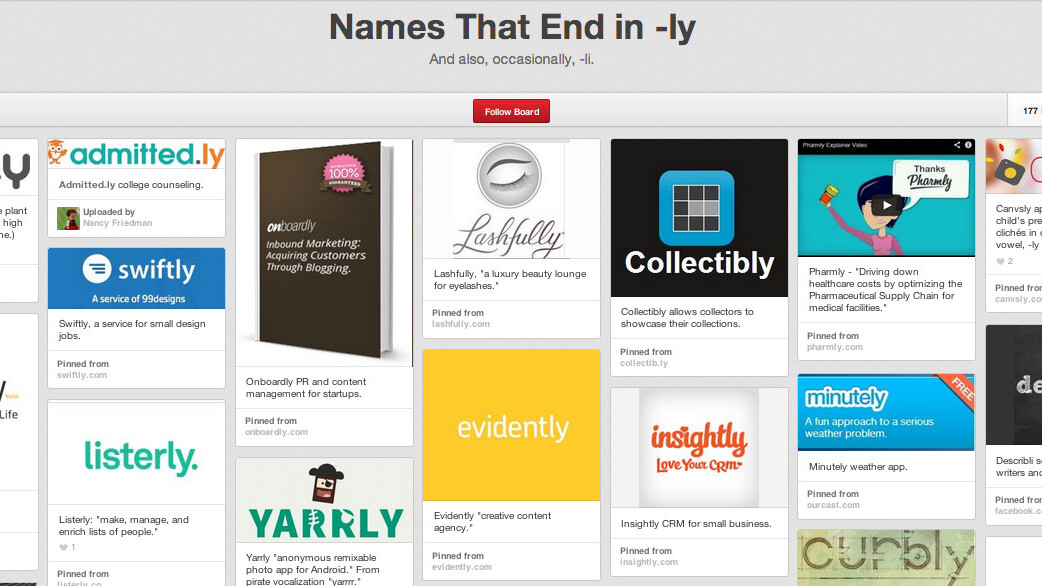
As if bootstrapped startups already didn’t have enough on their plates, they face an additional, major challenge that no amount of engineering or business acumen can adequately overcome: Naming their company.
In an age where strong online presence and clear differentiation from the competition are the order of the day, startups have their work cut out for them when it comes to settling on a name that is both memorable and meaningful to their audience.
Companies want to portray themselves as creative, friendly and forward-thinking. Somehow, this evolved into a common trend that sees startups all with -ly, -me, or -fy in their names. Dropping vowels are also a thing – and in some ways, that helps with differentiating the company from a regular word and shortens its URL. But considering that more than 100,000 new domains are registered daily, just how far outside the box do companies have to think?
Far enough to create alternative spelling for common, every day words, says Utsav Agarwal, founder and CEO of the gamified music sharing app nwplying.
“Nowplaying described the product in its simplest form, but it was too common a hashtag for us to possibly differentiate ourselves and create a brand around it – hence the term nwplyng, i.e. ‘nowplaying’ sans vowels,” he says. “Plus, the domain name nwplyng.com was easily available.”
Amanda Singleton, sales director at Qustodian, a mobile ad platform in the U.K., looked to a similar solution. “The name came about because in a world of ever-increasing concerns about data being misused, we see ourselves as the custodians of people’s data. Qustodian was the closest available domain name!”
While alternative spellings help companies secure dot-com domains easily, they can also add character and help a product or service stand out, particularly when operating in a typically straight-laced ecosystem.
Pavan Vilas Sondur says companies tend to find that dropping vowels… sound edgy. “The name Unbxd came about as a way to describe a school of thought that isn’t confined to boundaries,” he says. “In a way, we wanted a name that had more to do with our vision than our product.”
Another overwhelming trend: Adopting the Country Code Top Level Domain (CCTLD), such as .ly, .be, .us and the likes. Companies like Bitly and About.me are known for pioneering this naming convention, and many startups are now comfortable incorporating these extensions into their company names.
A prime example of this is Reach.ly, a real-time analytics service for e-commerce businesses. “We were hoping to get ‘reach.it’, but that was already taken,” cofounder Ernests Stals says. “Reach.ly was suggested by our domain name service, and that sounded just as good and easy to remember.”
Do companies really need to follow these trends?
While the necessity and buzz around yourname-dot-com domains have indeed died down in the past few years, it’s important to remember that unlike companies in other sectors, most tech startups usually build a single product or service, and their company name doubles up as a brand name. With that in mind, startups see sense in applying multiple name hacks to increase recall and differentiate their brand from others.
However, it’s important to be careful while working on a name with these trends. Eric Bieller, founder of Sqwiggle, advises against using CCTLDs just because they fit: “Letsfeast.com used to be found at letsfea.st, which is clever, but extremely difficult to explain to someone audibly.”
Utsav Agarwal adds, “From my experience with nwplyng, I wouldn’t recommend it to anyone. Users misspell it way too often, even the ones using it regularly – and that means you lose out on network effect and app downloads.”
Sometimes it’s not all about an optimal domain name. With Tiinkk, an iPhone app that crowdsources opinions for users, the name was more about what it came to mean, than what domains were available. Director Aaden Halbert said it originated when he heard his Irish friend say, “I tink you should call it…” He was obviously saying the word ‘think’ but it sounded different in his accent.
Tiinkk cofounder and CEO Joshua Winterton was sold on the name “tink” but wanted to make the name seem more like “think” because the nature of the app itself is all about validation and opinions. “It fitted in with our core business perfectly and it held so much meaning to us as a company. So for us, it really didn’t stem from a trending aspect at all.”
Breaking new ground
A popular trend that many major players have found success with involves coining new terms. Think of Evernote and Instagram: These companies do such a great job of succinctly describing the product and the experience for the user, they are often used as verbs.
Exploring this naming convention could also help companies come up with brand names that are memorable not because they’re short, but because they remind users of the benefit they gain from using and associating with those brands.
What’s interesting to note from all these naming trends is how far removed they are from the way brands were named a few decades ago: With family names, places of origin, or positive adjectives. Sure, our needs were simpler back then, and we didn’t have as much competition to deal with – but more importantly, we didn’t have to worry about the scarcity of quality domain names.
If you’re still struggling to crack that perfect name and domain for your startup, be sure to check out our piece from last year by Julian Shapiro on how to do it right.
Get the TNW newsletter
Get the most important tech news in your inbox each week.




